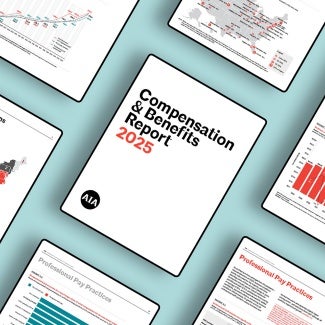Federal court sides with architect in payment dispute
May 31, 2017 | Updated: August 30, 2019
A noteworthy federal court case upheld an architect’s right to terminate a license to use its drawings. The right to use drawings and specifications is often an architect’s best bargaining chip in a payment dispute.
An architect’s right to terminate
A federal court recently upheld an architect’s right to terminate a license to use its drawings and specifications where an owner failed to make payments to the architect. In reaching its decision on Eberhard Architects, LLC vs. Bogart Architecture, Inc., et al, the court relied on provisions in the parties’ contract that are identical to those found in AIA’s B101-2007 Standard Form of Agreement Between Owner and Architect. Architects should take note of this decision, as the right to use drawings and specifications—an architect’s instruments of service—is often their best bargaining chip in a payment dispute.
In this case, project owner Lifecare Hospice hired Eberhard Architects to design a 12-bed inpatient hospice facility. In their contract, Eberhard granted Lifecare a nonexclusive license to use its drawings and specifications in connection with the project. The agreement further provided that Eberhard could terminate the contract and the license if Lifecare failed to pay according to the contract. The contract provision, which is also found in B101-2007, is as follows:
Lifecare stopped paying Eberhard’s invoices midway through the project. In response, Eberhard terminated the contract and Lifecare’s license to use its drawings and specifications. Lifecare and its contractors nevertheless continued to use the drawings and specifications, despite multiple cease and desist warnings. Eberhard finally sued Lifecare and its contractors for copyright infringement, among other claims, in an effort to get paid and to stop the improper use of their intellectual property.
During litigation, Lifecare moved for judgment on the pleadings, while the contractor defendants moved to dismiss the lawsuit. The court was thus faced with the question of whether Eberhard, under its contract, could properly terminate Lifecare’s license to use its instruments of service. The court denied both motions and held that Eberhard rightfully terminated the agreement, which revoked Lifecare’s license. The court further held that any further use of Eberhard’s copyrighted materials would constitute an unlicensed use. The court noted that it was merely enforcing the parties’ intent as evidenced by their contract. In the court’s view, the contract clearly showed that the parties intended to allow the architect to terminate the agreement and license if Lifecare failed to make payments.
In reaching this conclusion, the court distinguished this case from others that did not have language similar to Section 7.3 of B101-2007. In particular, the defendants cited several cases in support of the idea that an architect could not properly bring a claim for copyright infringement merely because the owner failed to pay its invoices. The court held that such cases were dissimilar to the facts in this case because the Lifecare/Eberhard contract specifically contained a provision that terminated the owner’s license upon termination of the agreement. The court’s ruling addressed only the defendants’ motions, and did not yet consider the architect’s entitlement to payment. Nevertheless, the ruling showed that an architect’s position is greatly bolstered by contractual language that protects its intellectual property in the event of nonpayment.
AIA has provided this article for general informational purposes only. The information provided is not legal opinion or legal advice.



